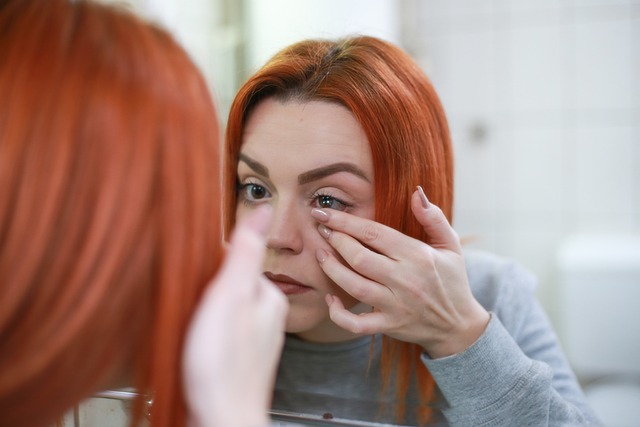You’ve heard the hype about carrots and beta carotene, but plenty of other supermarket staples have been shown to offer significant eye health benefits. Next time you’re in the meat and veggie aisles, look for these ingredients to make a meal that’s more than eye candy.
1. Spinach Omelet
Eggs and spinach are packed with lutein and zeaxanthin, two antioxidants that may guard against age-related macular degeneration and cataracts. Make this savory omelet for breakfast, lunch or dinner to invest in your eye health.
Ingredients:
3 eggs (or 1 egg, 3 egg whites)
1 tablespoon parmesan cheese
1 tablespoon shredded cheddar cheese
1 tablespoon mozzarella cheese
¼ teaspoon salt
1/8 teaspoon garlic powder
1/8 teaspoon ground black pepper
½ teaspoon olive oil or canola oil
1 cup fresh spinach, torn
½ cup sliced mushrooms (optional)
½ cup diced tomato (optional)
2 tablespoons chopped onion
a. Beat egg (and/or egg whites).
b. Mix in cheeses and spices.
c. Heat oil in skillet over medium heat.
d. Add spinach to skillet, cook till wilted.
e. Add remaining veggies to skillet along with egg mixture.
f. Cook till eggs set (about 10-15 minutes). Serve.
2. Salmon and Collard Greens
It’s no secret salmon comes with an abundance of Omega-3 fatty acids. This type of fat is infamously healthy and often comes in pill supplements—but did you know it might also support visual development, retinal function and reduced dry eye? Sear yourself some of this fish (or substitute mackerel) and combine with down-home collard greens (or another leafy green) for an extra boost of lutein and zeaxanthin, two antioxidants that may guard against age-related macular degeneration and cataracts.
Ingredients:
For the Salmon:
4 6-ounce salmon fillets
2 teaspoons olive oil
Salt and pepper to taste
Lemon wedges (garnish)
For the Greens:
2 pounds collard greens (stems removed)
1 tablespoon olive oil
2 cloves minced garlic
½ teaspoon crushed red pepper
1 cup vegetable stock (water OK)
½ red onion, sliced
2 tablespoons cider vinegar
Salt and pepper to taste
a. Add oil to nonstick pan on high heat.
b. Season salmon with salt and pepper.
c. Place salmon (skin-side down) on pan. Reduce heat to medium.
d. Cook salmon at least 5 minutes on one side. (If you lift the fish too soon it won’t sear, and it will stick to the pan.)
e. Turn fillets and cook 3-5 minutes more until barely pink in the center.
f. Meanwhile in a large pot heat olive oil on medium heat.
g. Add garlic and crushed red pepper.
h. When garlic is softened add stock (or water). Bring to a simmer.
i. Add onion, collard greens, and vinegar to pot. Cook 10-15 minutes till collard greens are tender.
j. Divide collard greens on four plates.
k. Bed one salmon fillet on each plate of greens and garnish with lemon wedges. Serve immediately.
3. Turkey Sandwich with Roasted Bell Pepper
Turkey is a major carrier of niacin, a B vitamin. Studies have shown niacin may have cataract-prevention benefits. Pile this Thanksgiving staple into a hefty sandwich and slip in some bell pepper, providing not only a crunch but also Vitamin C, which may help prevent age-related macular degeneration and cataracts.
Ingredients:
1 large bell pepper (any color)
4 slices rye or sunflower-seed bread (bread you have lying around OK)
Spinach or lettuce
¼ pound turkey
4 fresh basil leaves (optional)
Mayonnaise (optional)
a. Deseed, slice and roast bell pepper in the oven or on a grill.
b. Spread bread with mayonnaise (optional) and top with spinach, onion, turkey, peppers and basil.
c. Top with remaining bread slice. Makes 2 sandwiches.
4. Peanut Butter Sandwich with Carrot Snack
Nuts, including peanut butter, are filled with Vitamin E. Vitamin E protects eye cells from free radicals. Spread a few tablespoons of peanut butter onto sandwich bread (make it sunflower-seed bread or rye bread for extra Vitamin E) and scoop a helping of carrots onto your plate. The carrots add beta carotene, a type of Vitamin A that may promote healthy night vision.
Ingredients:
2 slices bread (rye or sunflower-seed preferred)
2 tablespoons peanut butter
Handful carrot sticks
1 tablespoon applesauce (optional)
1 banana (optional)
2 tablespoons Nutella (optional)
2 tablespoons marshmallow fluff (optional)
a. Spread bread with peanut butter.
b. Spread on any optional additional ingredient (applesauce, banana, Nutella, marshmallow fluff).
c. Toast if desired.
d. Plate with carrot sticks and serve.
5. Liver and Onion (and Carrots)
Rich in zinc, which may aid night vision and may help prevent cataracts, liver combines naturally with onions. Add some carrots to your cooking pot for a soft bite of beta-carotene, known also as a possible health aid for night vision. And what’s not to love about this recipe, which includes bacon?
Ingredients:
2 lbs beef liver
8 slices cooked bacon (halved to 16 pieces)
½ cup carrot slices
½ cup celery pieces
1 onion, sliced
1 lb stewed tomatoes
1 tsp salt
¼ tsp ground black pepper
1 bay leaf
a. Place liver in crock pot and lay bacon pieces on top.
b. Mix together remaining ingredients and pour over liver.
c. Cover and cook 6-8 hours in crock pot on low heat.
6. Ahi Tuna and Steamed Broccoli
Tuna is a major carrier of fatty acids, specifically omega-3 acids. These have been shown to help visual development, retinal function and treatment of dry eye. Sear yourself some tuna steaks and add a side of steamed broccoli or spinach for a fix of lutein and zeaxanthin, two antioxidants that may guard against age-related macular degeneration and cataracts.
Ingredients:
2 5-ounce tuna steaks
1 teaspoon salt
1/8 teaspoon cayenne pepper
½ tablespoon butter
2 tablespoons olive oil
1 teaspoon whole peppercorns
1 or 2 bunches broccoli
a. Season tuna steaks with salt and cayenne.
b. Add butter and olive oil to nonstick skillet on medium-high.
c. Cook peppercorns till soft (about 5 minutes and they will pop).
d. Gently place tuna steaks in skillet. Cook at least 2 minutes per side.
e. Rinse broccoli and break into bite-size florets. Remove stem.
f. Boil 1 inch water in pot. Add broccoli to steamer or, if no steamer, directly to water. Cook 5 minutes or till soft.
g. Plate broccoli and tuna steaks. Serve immediately.
7. Pizza with Anchovies, Bell Pepper, Spinach
Pizza can provide a lot of nutrients, from carbs to protein to healthy fat and beyond, to vitamins and minerals, depending on your topping. Try this recipe for a dose of omega-3 fatty acids (may help retinal function and to treat dry eyes), of Vitamin C (which might protect against age-related macular degeneration and cataracts) and of lutein and zeaxanthin, which offer similar benefits as Vitamin C.
Ingredients:
1 pizza crust
1 can tomato sauce
10 oz cheese (mozzarella, Italian, asiago, etc.)
2 anchovy fillets
3 cups baby spinach
1 bell pepper, sliced or diced
3 cloves minced garlic
1 cup diced onion
¼ teaspoon crushed red pepper
Additional toppings to taste
a. Preheat oven to 350 degrees Fahrenheit.
b. Spread tomato sauce on pizza crust and sprinkle with cheese.
c. Top with additional toppings and season to taste.
d. Sprinkle a final layer of cheese.
e. Bake 10-15 minutes.
8. Kale Chips
We know what you’re thinking. But give these a try. Kale is packed with lutein and zeaxanthin, two antioxidants that may guard against age-related macular degeneration and cataracts. They are also easier than pie to make! Grab some kale at the store, and get ready to make these chips with cupboard items and a few spare minutes that you already have lying around.
Ingredients:
4 cups kale
1 tablespoon olive oil
Salt to taste
a. Tear kale into chip-sized pieces and rinse.
b. Dry kale and toss with olive oil. (You can use your hands.)
c. Cover pan with parchment paper and lay kale in single layer.
d. Bake at 350 degrees for about 10 minutes or until dry.
e. Salt to taste and enjoy!
Whether or not you’ve had LASIK surgery, eye and vision care are essential. In addition to eating for good eye health, be sure to get annual eye exams. Annual eye exams are crucial for eye and overall health.












